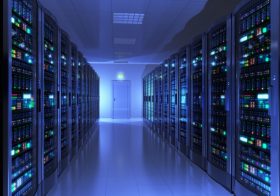AWS re:Invent Day 1: Performance, Security, IoT, & More

Amazon’s (Nasdaq; AMZN) annual AWS re:Invent conference opened this week, live in Las Vegas and virtual as well. And as ever, announcements are all over the lot. If there’s a significant trend, it’s that AWS aims to improve performance, efficiency, and security of AWS infrastructure, particularly for developers. And in applications, the focus is on emerging and vertical markets, in a bid to differentiate AWS from Microsoft’s (Nasdaq: MSFT) Azure and Alphabet (Nasdaq: GOOGL) Google Cloud Platform services.
Notably absent today were announcements supporting multi-cloud capabilities – certainly no surprise. Perhaps new AWS CEO Adam Selipsky will have more to say on that during his keynote tomorrow.
Infrastructure: Performance, Efficiency, Security
Among today's infrastructure announcements were a few standouts, as noted below:
Performance. AWS announced EC2 G5g instances based on AWS Graviton2 processors alongside T4G Tensor Core GPUs from NVIDIA (Nasdaq: NVDA). AWS claims G5g are “the first Arm-based instances in a major cloud to feature GPU acceleration.” The instances are aimed at gaming developers and developers of machine-learning applications.
AWS also has upgraded its EC2 instances with AMD’s (Nasdaq: AMD) EPYC or “Milan” processors in an offering dubbed EC2 M6a. AWS claims these instances “deliver up to 35% better price performance” than previous versions of EPYC-powered EC2 and cost 10% less than comparable x86-based EC2 instances.
Efficiency. AWS has expanded its AWS Compute Optimizer with Resource Efficiency Metrics that “help you assess how efficiently you are using AWS resources.” Included is a dashboard and an estimated monthly savings estimator, as well as an assessment of “underprovisioned resources.” This speaks specifically to users’ demands for tools that help them optimize the use of pricey AWS services. The news also follows a November 26 announcement significantly reducing egress charges for data being transferred from AWS to the Internet.
AWS has released a Real User Monitoring (RUM) feature to its cloud application development platform CloudWatch. The RUM addition lets developers monitor their apps as users deploy them, replacing the partial performance information of so-called synthetic testing.
AWS also unveiled CloudWatch Evidently, which lets CloudWatch developers experiment with features and control incremental code releases.
Security. As the name implies, a new addition to AWS CodeGuru for developers, named Amazon CodeGuru Reviewer Secrets Detector, automatically detects secrets, e.g., passwords, API keys, Secure Shell (SSH) protocol keys, access tokens, and the like in Java and Python applications. The goal is to ensure that hard-coded secrets don’t get programmed into places they don’t belong, something that can happen when developers are under pressure.
AWS also unveiled a slew of improvements to Amazon Inspector, a product that scans workloads in AWS for vulnerabilities. The product has been completely rearchitected, says AWS, and includes wider integration with other AWS tools, including AWS Organizations, which helps managers track and govern AWS resources; Amazon EventBridge, a developer tool that links events with SaaS applications; and AWS Security Hub, which tracks and manages security alerts in AWS environments.
Industrial Applications Showcased
As for applications, today’s announcements featured Internet of Things (IoT) and industrial automation, as noted below:
- Improvements to AWS IoT SiteWise, a managed service for tracking and managing industrial IoT data, include a new two-tier storage system – “hot” for real-time data, and “cold” for storing less frequently accessed data. The goal is to help customers save AWS storage costs.
- AWS has integrated its IoT runtime, AWS IoT Greengrass, with AWS Systems Manager. This provides the ability to use all Systems Manager functions, such as operating system upgrades and maintenance, not only for EC2 instance-based IT resources but for device software as well.
- AWS also launched a Greengrass Software Catalog on GitHub, including AWS IoT Greengrass software components to help developers “kick-start” their IoT apps instead of starting from scratch.
- AWS is previewing AWS IoT RoboRunner, a platform for building applications for robots, enabling “fleets” of industrial robots to be managed and orchestrated centrally.
More on the Way
With re:Invent just getting underway, it’s likely we’ll see some more dramatic announcements tomorrow, as CEO Selipsky takes the stage. Watch this space!

















